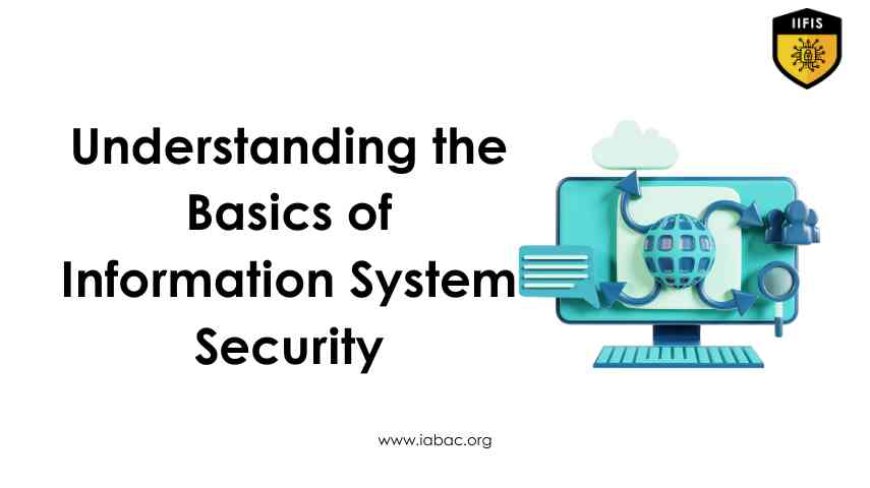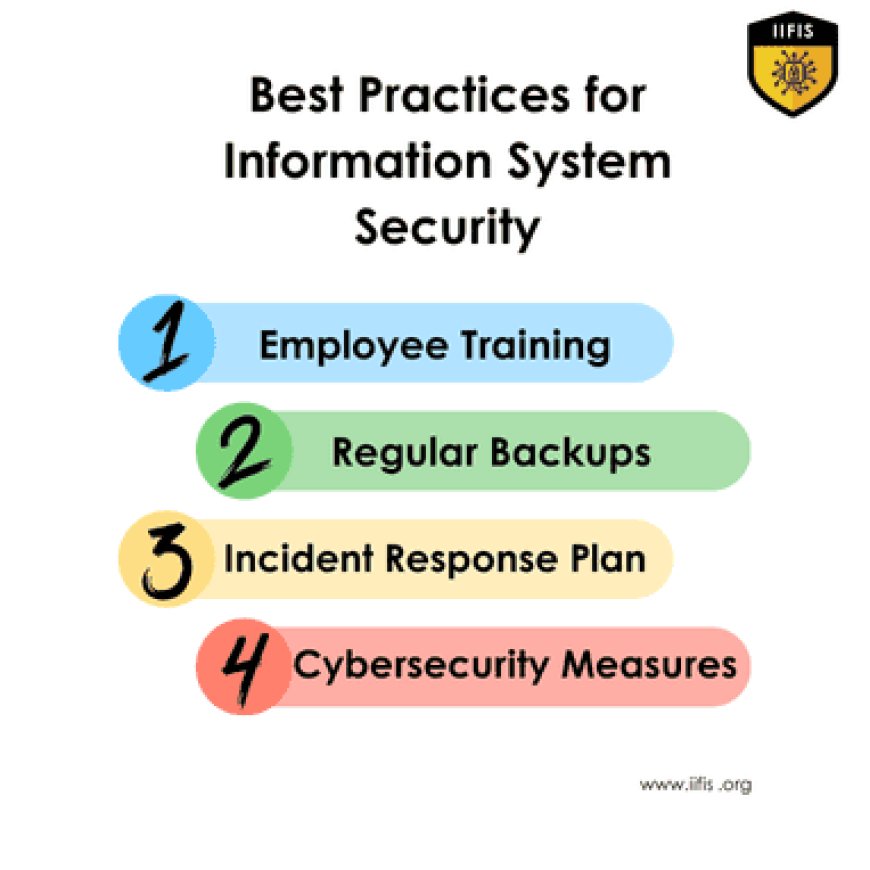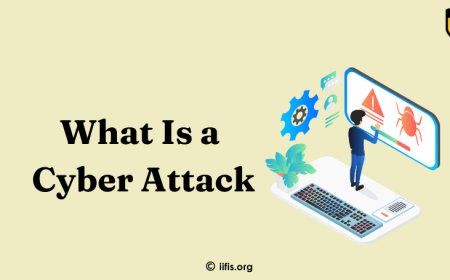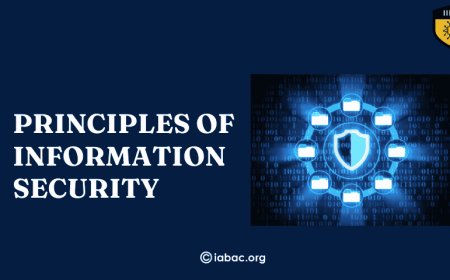Understanding the Basics of Information System Security
Learn the fundamentals of information system security with our guide. Explore key concepts like confidentiality, integrity, and availability, and discover essential practices to protect your data and systems from cyber threats and breaches.

Protecting your information systems is more critical than ever. Whether you're a business owner, IT professional, or simply someone interested in the field, understanding the basics of information system security is essential. This foundational knowledge not only helps protect sensitive data but also ensures that your systems remain resilient against potential cyber attacks. In this blog, we’ll break down the core principles of information system security, from identifying potential weaknesses to implementing strong protection measures. Join us as we explore the fundamentals that will empower you to secure your digital environment effectively.
Information System Security
Information System Security refers to the practices, processes, and technologies designed to protect an organization's information systems from various types of threats, including unauthorized access, data breaches, and cyberattacks. It encompasses a range of strategies aimed at ensuring the confidentiality, integrity, and availability of information and information systems.
Key aspects of information system security include:
-
Confidentiality: Ensuring that information is only accessible to those who are authorized to view it. This often involves encryption, access controls, and authentication mechanisms.
-
Integrity: Protecting data from being altered or tampered with by unauthorized users. This is achieved through measures like hashing, digital signatures, and regular data validation.
-
Availability: Ensuring that information and systems are accessible to authorized users when needed. This involves implementing measures such as backup systems, redundancy, and disaster recovery plans.
-
Authentication: Verifying the identity of users or systems trying to access information. Common methods include passwords, biometrics, and multi-factor authentication.
-
Authorization: Granting permissions to users based on their role or needs, ensuring that they can only access resources that they are permitted to use.
-
Risk Management: Identifying potential threats and vulnerabilities, assessing their potential impact, and implementing strategies to mitigate these risks.
-
Incident Response: Developing and implementing plans to respond to and recover from security breaches or other incidents that comprise information systems.
-
Compliance: Adhering to relevant laws, regulations, and standards related to information security, such as GDPR, HIPAA, or ISO 27001.
Importance of Securing Information Systems:
-
Protection Against Cyber Threats: defends against sophisticated attacks like ransomware and malware.
-
Safeguarding sensitive data: prevents unauthorized access to personal, financial, and intellectual property data.
-
Maintaining business continuity minimizes operational disruptions and financial losses from security breaches.
-
Compliance with Regulations: Ensures adherence to data protection laws and avoids legal penalties.
-
Preserving Reputation and Trust: Protects organizational reputation and builds customer confidence.
-
Preventing Financial Losses: Reduces costs related to data breaches, legal fees, and remediation.
-
Enabling Safe Innovation: Supports new technology adoption while managing associated security risks.
-
Enhancing Customer Confidence: Demonstrates commitment to protecting customer data and maintaining trust.
Key Concepts in Information System Security
-
Confidentiality: Ensures data is accessible only to authorized users. This prevents unauthorized access to sensitive information, such as personal or financial data, using methods like encryption, access controls, and multi-factor authentication.
-
Integrity: Protects data from unauthorized changes, maintaining its accuracy and reliability. Integrity is upheld through techniques such as data validation, digital signatures, and hashing, ensuring that information remains accurate and unaltered.
-
Availability: Guarantees that information systems and data are accessible to authorized users whenever needed. This involves implementing redundancy, backups, and disaster recovery plans to ensure that systems remain operational and data is recoverable in case of disruptions.
Together, these principles safeguard data and ensure the reliability and functionality of information systems, crucial for maintaining security and operational effectiveness.
Types of Security Threats
-
Cyberattacks:
-
Malware: Malicious software designed to damage or disrupt systems, such as viruses, trojans, and worms.
-
Phishing: Fraudulent attempts to obtain sensitive information by pretending to be a trustworthy entity, often through deceptive emails or websites.
-
Ransomware: A type of malware that encrypts data, demanding payment for its release.
-
Insider Threats:
-
Unintentional: Accidental actions by employees, such as mishandling data or falling for phishing scams.
-
Malicious: Deliberate actions by employees aiming to steal data or harm systems.
-
Physical Threats:
-
Unauthorized Access: Physical intrusion into hardware or facilities, such as theft or tampering with servers.
-
Application Security: Ensuring that software applications are protected from vulnerabilities that could be exploited by attackers.
Basic Security Measures
-
Access Control:
-
Definition: Implementing strong authentication and authorization mechanisms to ensure that only authorized users can access systems and data.
-
Methods: Utilizing multi-factor authentication (MFA), strong passwords, and role-based access controls (RBAC).
-
Encryption:
-
Definition: Protecting data both in transit and at rest to prevent unauthorized access.
-
Methods: Using encryption protocols such as SSL/TLS for data in transit and AES for data at rest.
-
Regular Updates and Patching:
-
Definition: Keeping software and systems up to date to address security vulnerabilities and protect against exploits.
-
Methods: Applying security patches and updates promptly to fix known issues and enhance system security.
-
Definition: Protecting network infrastructure from attacks and unauthorized access.
-
Methods: Implementing firewalls, intrusion detection/prevention systems (IDS/IPS), and secure network configurations.
Best Practices for Information System Security

1.Employee Training:
-
-
Definition: Educating staff on security protocols and best practices to enhance overall security awareness.
-
Methods: Conducting regular training sessions on recognizing phishing attempts, handling sensitive data, and following security procedures.
-
-
Regular Backups:
-
Definition: Ensuring that data is regularly backed up and can be restored in case of an incident or data loss.
-
Methods: Implementing automated backup solutions and testing restore procedures to verify data integrity and recovery capabilities.
-
-
Incident Response Plan:
-
Definition: Developing a comprehensive plan to respond effectively to security breaches and mitigate damage.
-
Methods: Establishing procedures for detecting, containing, and recovering from incidents, including communication protocols and roles.
-
-
Cybersecurity Measures:
-
Definition: Implementing protective measures specifically aimed at defending against cyber threats.
-
Methods: Using firewalls, antivirus software, and intrusion detection systems to safeguard against cyberattacks.
-
Tools and Resources
-
Overview of Common Security Tools:
-
Firewalls: Monitor and control incoming and outgoing network traffic based on predetermined security rules, protecting against unauthorized access.
-
Antivirus Software: Detects, prevents, and removes malicious software, such as viruses, trojans, and worms.
-
Intrusion Detection Systems (IDS): Monitors network traffic for suspicious activity and potential threats.
-
Encryption Tools: Secure data by converting it into a coded format, which can only be read by authorized parties.
-
Security Information and Event Management (SIEM): Provides real-time analysis of security alerts generated by various hardware and software infrastructures.
-
Resources for Staying Updated on Security Trends and Practices:
-
Security Blogs and Websites: Follow industry-leading blogs and websites like Krebs on Security, Security Weekly, and the SANS Institute for the latest news and insights.
-
Online Forums and Communities: Engage with communities on platforms such as Reddit’s r/netsec or Stack Exchange for discussions and advice on current security topics.
-
Professional Organizations: Join organizations like (ISC)² or ISACA for access to resources, certifications, and networking opportunities.
-
Training and Webinars: Participate in online courses and webinars from providers like Coursera, Udemy, or Cybrary to stay informed about new tools and techniques.
-
Government and Industry Reports: Review reports from entities like the National Institute of Standards and Technology (NIST) or the European Union Agency for Cybersecurity (ENISA) for comprehensive security guidelines and updates.
Securing information systems is vital for protecting sensitive data and ensuring business continuity. Implementing robust security measures, including effective tools, regular backups, and employee training, is essential. Regularly reviewing and updating your security practices helps defend against evolving threats. For further expertise, explore resources and training from the International Institute for Information Security (IIFIS) to stay ahead in information security.
























